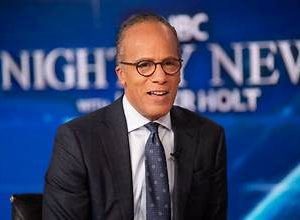Target Corporation has reduced its full-year sales forecast after facing challenges from tariff uncertainties and customer backlash over its rollback of diversity, equity, and inclusion (DEI) initiatives. The retail giant’s recent quarterly results fell short of market expectations, signaling ongoing struggles in regaining growth momentum.
Weak First-Quarter Performance
In the first quarter, Target’s revenue missed Wall Street estimates, dropping nearly 3% compared to the same period last year. Customer transactions declined by 2.4% across stores and online platforms, while average spending per visit fell by 1.4%. These numbers reflect the retailer’s difficulty in attracting shoppers amid a cautious spending environment.
Sales Outlook Cut
Target now anticipates a low single-digit sales decline for the fiscal year, revising down from a previous forecast of around 1% sales growth. Adjusted earnings per share are expected to be between $7 and $9, lower than the earlier prediction of $8.80 to $9.80.
Economic and Market Challenges
CEO Brian Cornell pointed to economic headwinds and tariff-related uncertainties as key factors hurting consumer confidence and spending. The company’s retreat on DEI programs has also sparked negative reactions from some customers and activists, adding to the pressure.
Leadership Changes and New Strategy
To address these issues, Target has established a new Enterprise Acceleration Office led by COO Michael Fiddelke. This team will focus on streamlining operations, leveraging technology, and accelerating growth initiatives.
Additionally, Amy Tu, Chief Legal and Compliance Officer, and Christina Hennington, Chief Strategy and Growth Officer, are leaving the company amid leadership reshuffles. Hennington was considered a potential CEO successor.
Market Share and Product Highlights
Target holds or gained market share in 15 of 35 tracked merchandise categories, but losses in key areas signal room for improvement. Positive trends include a 36% increase in same-day deliveries through the Target Circle 360 membership program and strong sales in seasonal categories like beverages, floral, and toddler clothing.
Pricing and Tariff Impact
Target plans to raise prices on some products to offset rising costs from tariffs, unlike some competitors such as Home Depot, which avoids price hikes. The retailer is negotiating with vendors and diversifying manufacturing locations to reduce tariff effects.
Currently, about 50% of Target’s products are made in the U.S., and the company aims to cut private-label goods sourced from China to 25% by the end of next year.
Commitment to Affordable Options
Despite cost pressures, Target remains focused on offering low-priced items, maintaining a dedicated section with products priced at $1, $3, and $5. The retailer plans to expand this area with new beauty and food items to attract budget-conscious shoppers.
Conclusion
Target’s recent performance highlights the challenges it faces in a shifting retail landscape marked by economic uncertainty and changing consumer preferences. Through leadership changes and strategic initiatives, the company aims to improve growth and restore customer loyalty in the coming months.





